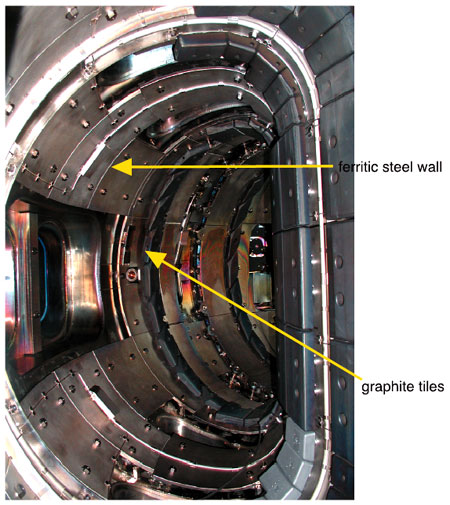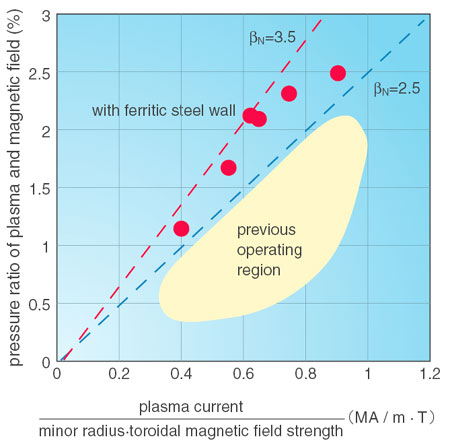The first wall of the fusion demonstration reactor must sustain strong heat and neutron loads compared with present experimental devices. Therefore, a new material that has good thermal properties and reduced activation must be employed. Reduced activation ferritic steel is a leading candidate for this service. However, being a ferromagnetic material, it might degrade plasma performance due to induced magnetic fields. Thus, compatibility of the ferritic steel with high-performance plasma is a critical issue in applying this material to the reactor.
In the JAERI Fusion Torus-2M (JFT-2M) tokamak, this compatibility has been investigated by incrementally installing ferritic steel wall components into the device. Fig. 2-3 is an inside view of the vacuum vessel, where the inside wall is fully covered with the ferritic steel liner. Even with the wall fully covered, high-performance plasmas were obtained that were similar to those produced before the installation of the ferritic steel wall. This demonstrated that the ferritic steel wall had no adverse effect on plasma production, control, stability, or confinement [1]. As a progression of this work, compatibility with higher-pressure plasma was investigated because the demo reactor will be operated under conditions conducive to improved economic efficiency. Plasma performance prior to this work was inadequate for this purpose, so efforts to improve the maximum pressure have been made by optimizing operational scenarios and reducing impurities by a boron coating. High-pressure plasma with a normalized-beta (betaN) of ca. 3.5, as shown in Fig. 2-4, was finally obtained [1,2]. This result suggests the compatibility of the ferritic steel wall with high-betaN plasma.
These results show excellent prospects for applying this material to the reactor, and thus, they are an important advancement in fusion research.
|

